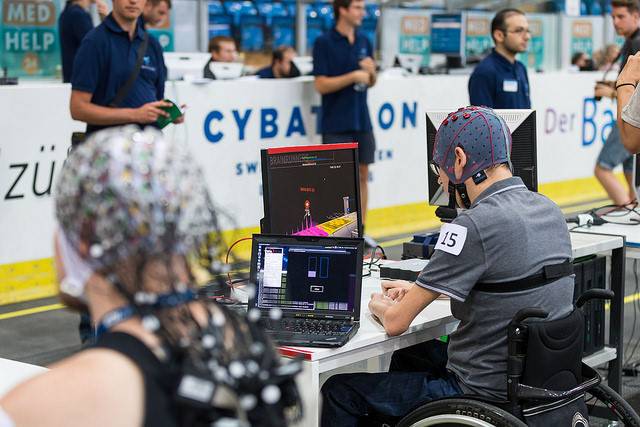With the 2016 Paralympics kicking off in a couple of weeks, highly trained athletes are preparing for a range of competitive events that pit people with similar disabilities against each other in 528 events sports including wheelchair basketball, blind rugby and canoe sprints.
But as sports training and equipment becomes more technologically advanced, some are asking question about the place of technology in the Paralympics.
After VISTA 2013 themed that year on “Equipment and Technology in Paralympic Sports“, speaker, participants and sports enthusiasts were asking about the parity of equipment in the Paralympics given the cost of highly advanced technology. Some questioned whether the more wealthy countries would dominate the medal tables as they potentially have more money to develop “performance enhancing” technology. Others questioned the role of science and technology and whether it would surpass the raw ability of the athlete.
Brendan Burkett, an ex-Paralympian swimmer and now professor in biomechanics at the University of the Sunshine Coast commented:
“But we still need to keep the essence of the sport. We need to keep that while also improving the functionality of the sport. We don’t want the sports to be inhibited by robots, though. We want them to always be controlled by the humans.”
This is further challenged by a lack of sponsorship for individual competitors, low ticket sales and limited television access compared to the Olympic games.
But one event is taking a different approach.
The inaugural Cybathlon kicks off on October 8 in Zurich, Switzerand and will see 74 athletes from 25 countries competing to show how robotic technology helps them in their daily lives. Competitors are referred to as “pilots” and depending on their disability, they compete in a series of tasks to test their agility, dexterity and speed.
Obstacle courses with prosthetics and wheelchairs
In the respective obstacle courses, four pilots compete simultaneously on parallel tracks against each other to solve six tasks in the shortest time. For example, in the obstacle course with prosthetic legs, different step sequences and movements must be carried out such as climbing stars and walking across a beam. Those with prosthetic arms must demonstrate dexterity with a range of fine motor skills tasks.
See also: Wearables make a big splash at Rio 2016 Olympics
In the motorized wheelchair course, wheelchairs which are controlled by joystick, tongue control, touchpad or by other technologies are approved and their pilots are encouraged in small teams to develop innovative solutions to everyday access challenges such as building inputs with thresholds, uneven pavements or steep ramps. Eligible athletics include those with various types of spinal cord injuries, bilateral leg amputations or other serious injuries that make walking impossible.
Exoskeleton obstacle course

For Cybathlon, the most comfortable and most agile exoskeletons are sought which enable pilots to perform various everyday movements easily and reliably – even climbing stairs or walking on uneven terrain. Only pilots with complete leg paralysis due to a spinal cord injury can participate competing on simultaneous parallel tracks.
Virtual Racing with Brain Control Interface (BCI)

Brain-computer interfaces are able to detect brain signals enabling people with various levels of paralysis to move things with their mind. In virtual racing the pilot utilizes thought control to control characters — or avatars — in a specially developed computer game. The pilots must send the appropriate signals at the right moment so that their avatars jump over obstacles or accelerate. False signals lead to a slow down or a clash. Most teams use the electroencephalography (EEG) for detecting brain signals, but other methods such as near-infrared spectroscopy (NIRS) are permitted.
The Cybathlon is designed to provide a platform for the development of novel, practical assistive technologies whilst breaking down barriers between people with disabilities, the public and technology developers. It’s not turning people into cyborgs but it is an opportunity to participate in an event with the world’s most ground breaking access technology.
It’ll be interesting to see it’s impact on the Paralympics and whether it attracts people audiences and sponsors to the innovative world of adaptive technology.
All photos are credited to ETH Zurich / Alessandro Della Bella. ETH Zurich is the founder and organizer of the Cybathlon.


















